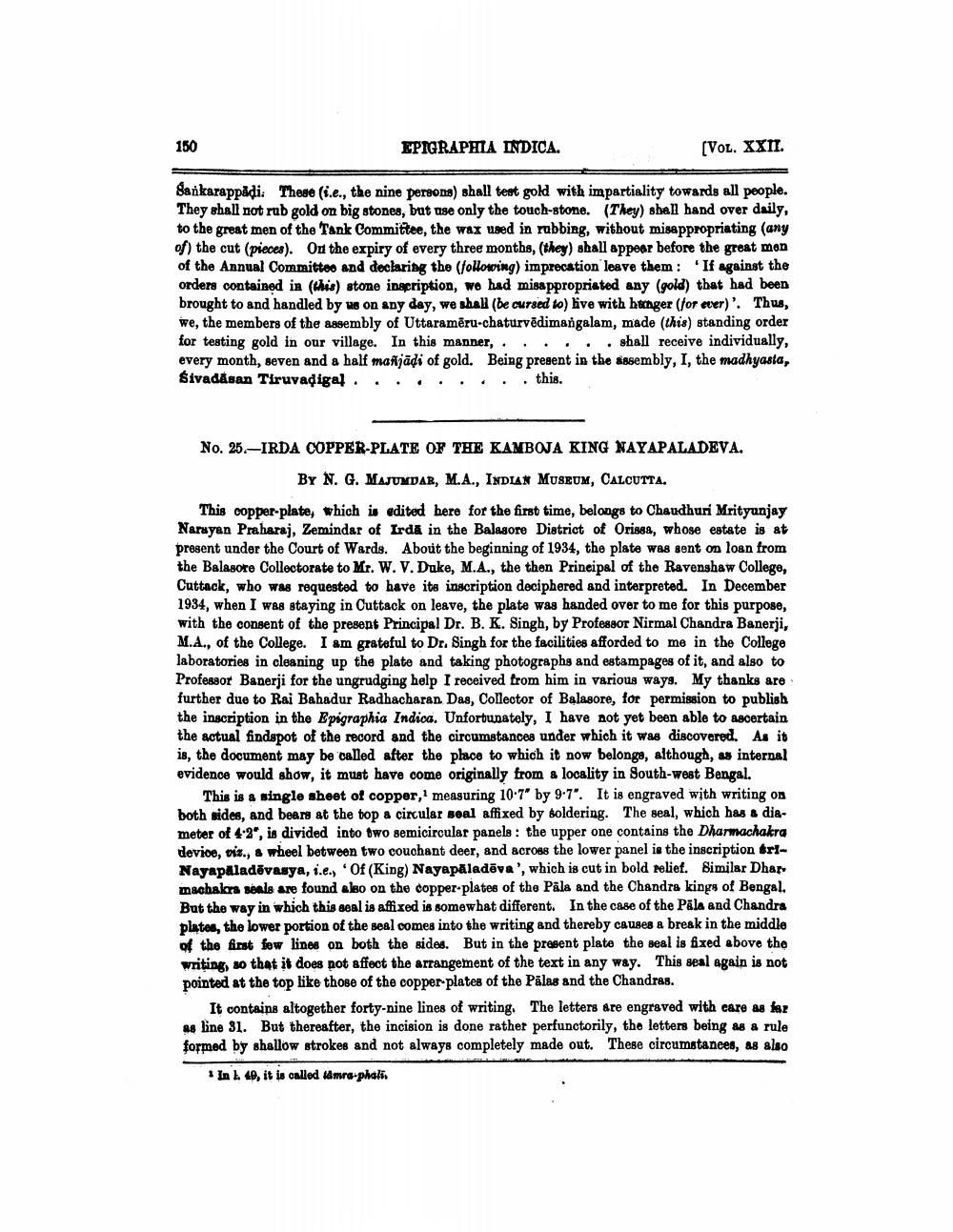________________
150
EPIGRAPHIA INDICA.
(VOL. XXII.
Sankarappadi: These (i.e., the nine persons) shall test gold with impartiality towards all people. They shall not rub gold on big stones, but use only the touch-stone. (They) shall hand over daily, to the great men of the Tank Committee, the wax used in rubbing, without misappropriating (any of) the cut (pieces). On the expiry of every three months, (they) shall appear before the great mon of the Annual Committee and declaring the following) imprecation leave them : 'If against the orders contained in this stone inscription, we had misappropriated any (gold) that had been brought to and handled by us on any day, we shall (be cursed to) live with hanger (for ever)'. Thus, We, the members of the assembly of Uttaramēru-chaturvēdimangalam, made (this) standing order for testing gold in our village. In this manner, . . . . .. shall receive individually, every month, seven and a half mañjadi of gold. Being present in the sasembly, I, the madhyasta, Sivadåsan Tiruvadigal.... . . . . this.
No. 25.-IRDA COPPER-PLATE OF THE KAMBOJA KING NAYAPALADEVA.
BY N. G. MAJUMDAR, M.A., INDIAN MUSEUM, CALCUTTA.
This copper-plate, which is edited here for the first time, belongs to Chaudhuri Mrityunjay Naruyan Praharaj, Zemindar of Irda in the Balasore District of Orissa, whose estate is at present under the Court of Wards. About the beginning of 1934, the plate was sent on loan from the Balasore Collectorate to Mr. W. V. Duke, M.A., the then Principal of the Ravenshaw College, Cuttack, who was requested to have its inscription deciphered and interpreted. In December 1934, when I was staying in Cuttack on leave, the plate was handed over to me for this purpose, with the consent of the present Principal Dr. B. K. Singh, by Professor Nirmal Chandra Banerji, M.A., of the College. I am grateful to Dr. Singh for the facilities afforded to me in the College laboratories in cleaning up the plate and taking photographs and estampages of it, and also to Professor Banerji for the ungrudging help I received from him in various ways. My thanks are further due to Rai Bahadur Radhacharan Das, Collector of Balasore, for permission to publish the inscription in the Epigraphia Indica. Unfortunately, I have not yet been able to ascertain the actual findspot of the record and the circumstances under which it was discovered. As it is, the document may be called after the place to which it now belongs, although, as internal evidence would show, it must have come originally from a locality in South-west Bengal.
This is a single sheet of copper, measuring 107" by 9.7". It is engraved with writing on both sides, and bears at the top a circular seal affixed by soldering. The seal, which has a diameter of 4.2", is divided into two semicircular panels: the upper one contains the Dharmachakra device, viz., & wheel between two couchant deer, and across the lower panel is the inscription friNayapaladēvasya, i.e., Of (King) Nayapăladēva', which is cut in bold relief. Similar Dhar machakra Beals are found also on the copper-plates of the Pāla and the Chandra kings of Bengal. But the way in which this seal is affixed is somewhat different. In the case of the Pala and Chandra plates, the lower portion of the seal comes into the writing and thereby causes a break in the middle of the first few lines on both the sides. But in the present plate the seal is fixed above the writing, so that it does not affect the arrangement of the text in any way. This seal again is not pointed at the top like those of the copper-plates of the Palas and the Chandras.
It contains altogether forty-nine lines of writing. The letters are engraved with care as far A8 line 31. But thereafter, the incision is done rather perfunctorily, the letters being as a rule formed by shallow strokes and not always completely made out. These circumstanees, as also
1 In L 40, it is called tamra-phali




